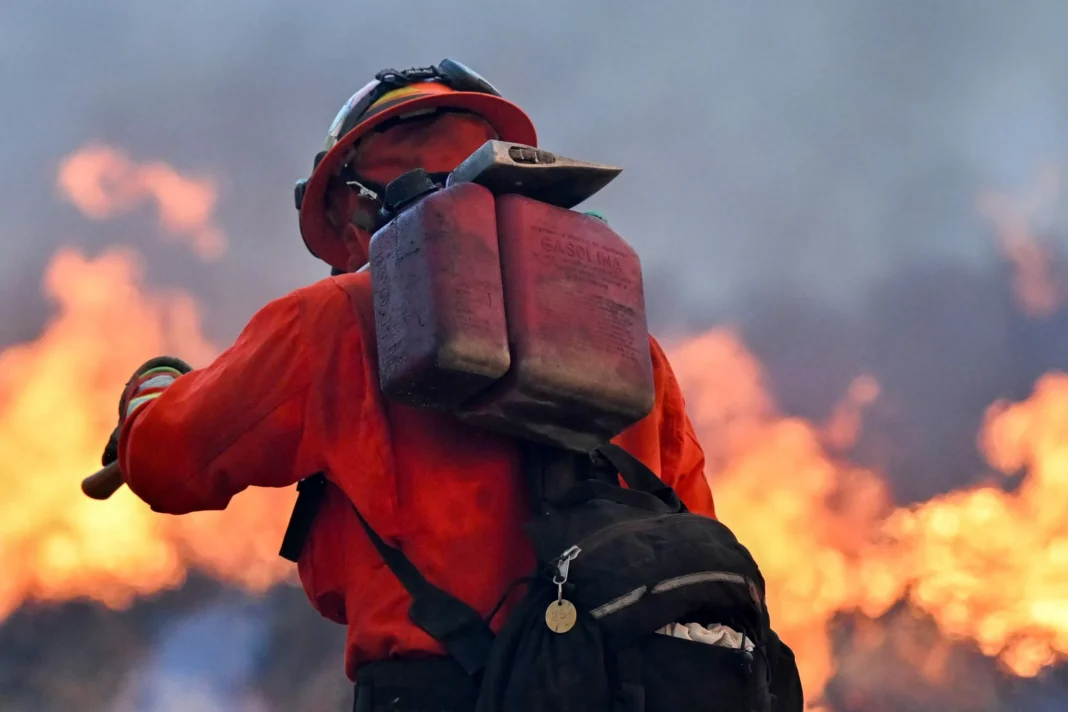California is known for its beautiful beaches, sunny weather, and diverse culture. However, there is another aspect of the state that often goes unnoticed – its reliance on incarcerated firefighters. It may come as a surprise to many, but approximately 30% of California’s firefighters are incarcerated individuals. These brave men and women put their lives on the line to protect the state’s residents and their property, yet they are often overlooked and underpaid.
According to a report by the California Department of Corrections and Rehabilitation, there are over 3,000 incarcerated firefighters in the state. These individuals are part of the state’s Conservation Camp Program, which trains and employs inmates to fight wildfires and assist in other emergency situations. They work alongside professional firefighters and are often the first responders to wildfires, putting their lives at risk to protect others.
One may wonder why the state relies on incarcerated individuals to fight fires. The answer lies in the fact that California has been facing a shortage of professional firefighters for years. The state’s population has been steadily increasing, and with it, the number of wildfires has also been on the rise. This has put a strain on the already limited number of professional firefighters, and the state has turned to incarcerated individuals to fill the gap.
However, the use of incarcerated firefighters has been a controversial topic. Many argue that it is a form of modern-day slavery, as these individuals are paid as little as $6 a day for their dangerous and physically demanding work. This is significantly lower than the average wage of a professional firefighter, which is around $74,000 a year. In addition, these individuals do not receive any benefits or job security, and their wages are often garnished to pay for their incarceration costs.
Despite these challenges, many incarcerated firefighters take pride in their work and see it as an opportunity to give back to society. They undergo rigorous training and work long hours, often in harsh conditions, to protect the state and its residents. They also gain valuable skills and experience that can help them secure employment after their release.
Moreover, the Conservation Camp Program has been proven to be successful in reducing recidivism rates. Inmates who participate in the program have a lower chance of reoffending, as they learn discipline, teamwork, and responsibility through their work as firefighters. This not only benefits the individuals but also the state and its residents, as it reduces the burden on the criminal justice system.
The use of incarcerated firefighters also has a positive impact on the state’s budget. The program saves the state millions of dollars each year, as it is much cheaper to employ incarcerated individuals than to hire professional firefighters. This allows the state to allocate more resources to other important areas, such as education and healthcare.
However, it is important to address the issue of low wages for incarcerated firefighters. These individuals are risking their lives and providing a valuable service to the state, and they deserve to be compensated fairly. The state should consider increasing their wages and providing them with benefits and job security. This would not only be a fair and just decision but also a step towards rehabilitation and reintegration for these individuals.
In conclusion, the use of incarcerated firefighters in California is a complex issue with both positive and negative aspects. These individuals play a crucial role in protecting the state and its residents, and their hard work and dedication should be recognized and appreciated. While there are challenges that need to be addressed, the Conservation Camp Program has proven to be beneficial for both the state and the inmates. It is time to give these brave men and women the recognition and fair treatment they deserve.


